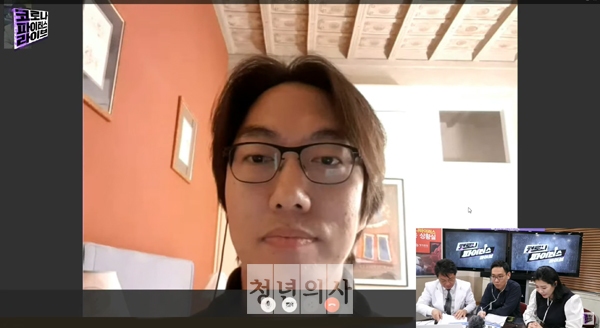More than 100 physicians have died from the new coronavirus in Italy. Still, an increasing number of doctors are volunteering to work in northern Italy hit hardest by Covid-19, a Korean doctor staying in Italy said.
Suh Sung-hwan, a professor at the Division of Endocrinology of DongA University College of Medicine staying in Florence, Italy, shared how Italian healthcare professionals were battling against the pandemic in one of the worst-hit regions in the world, during a YouTube life show “Corona Fighters Live” Tuesday by K-Healthlog, operated by The Korean Doctors’ Weekly. Suh has been staying in Florence with his family since July last year.

Italy’s daily new cases rose by 2,667 on Wednesday, pushing up the total cases to 165,155. Italy had the second-largest number of deaths by Covid-19, after the U.S., worldwide, and Italy’s fatality rate stayed high at 13.1 percent as of Wednesday.
Many physicians also died from the deadly virus while treating patients. As of April 9, 14,066 medical workers were infected with the virus, accounting for 9.5 percent of the total Covid-19 patients, and 107 doctors died.
“Despite the dire situation, Italian medical workers are doing their best. Just like other countries, Italy was short of medical supplies in the initial stage of the outbreak. The situation has become better now, but many health workers are short of gloves,” Suh said on the YouTube show. “China and Russia are supplying medical resources, and some of the factories are producing them to meet the demand. Due to the shortage of ventilators, some doctors remodeled diving masks to supply oxygen for patients.”
Covid-19 claimed more than 100 lives of physicians, but it was hard to find a medical practitioner who is reluctant to treat Covid-19 patients, Suh said.
The Italian authorities were recruiting 300 doctors and 500 nurses who would volunteer to go to northern Italy to fight the pandemic on March 21 and 29. For the 300 positions for doctors, 7,900 have applied, making the competition rate at 26 to 1. For 500 nurses, 9,400 have applied with the competition rate at 19 to 1.
Some Italian states were paying bonuses to physicians, Suh said. “Emilia Romagna State, in northern Italy, provided 1,000 euros ($1,086) to a medical worker. Toscana State offers 15-50 euros per day for extra work. I hope the Korean government could reward healthcare workers, too.”
According to Suh, Italian medical professionals provide aggressive oxygen treatment and prescribe HIV drug Kaletra, malaria drug chloroquine, and hydroxychloroquine for Covid-19 patients, under the recommendations by medical societies. They do not recommend the use of azithromycin, an antibiotic.
Suh said he heard the clinical outcome of tocilizumab, an anti-IL-6R agent, was encouraging. In Mantua, Padua, and Pisa, physicians started plasma therapy for Covid-19, he added.
Suh pointed out that although Italy focused on blocking the influx of Covid-19 by banning Chinese students from entering the country, it had unexpected patients in the northern region.

“When the first Covid-19 case occurred, the Italian medical workers did not think it was Covid-19 but general acute pneumonia. That was when the hospital was exposed to infections a lot, and new cases surged in the northern region,” he said. “The virus spread in a small city, but the failure to isolate infected people was the problem.”
Italy’s healthcare system was different from that of Korea, but it was systematic and excellent, Suh said. He broke his toe bone in January and visited an emergency room of Santa Maria Nuova Hospital in Florence. It took seven hours and 30 minutes for Suh to get non-urgent treatment and return home.
“For hot-tempered Koreans, the Italian system might not be satisfying. But they have a systematic treatment system that divides patients by urgency (red, yellow, green, and white),” Suh said.
Compared to Korea, Italy offered no different service in medical tests, patient care, and treatment, he added.
“Doctors and nurses were professional, and doctors spoke good English. They had the newest X-ray and PACS (picture archiving and communication system) systems,” Suh said.
Italy offers both the National Health Service (NHS) and private healthcare. After Suh visited the ER, he received orthopedic outpatient care at a private clinic.
“For a simple consultation, they charge 50 euros. For a specialist’s care, they charge 150-170 euros. But you can make reservations quickly and see a doctor without waiting. A university professor also provides care at a private hospital,” he said.

